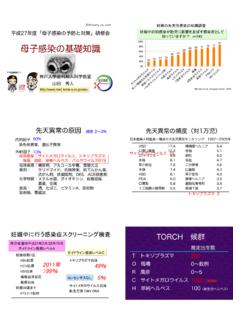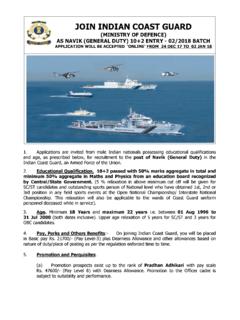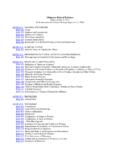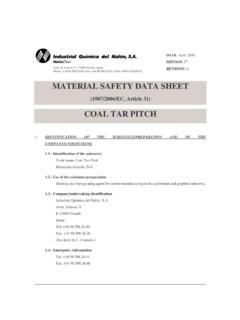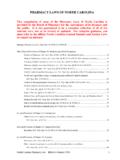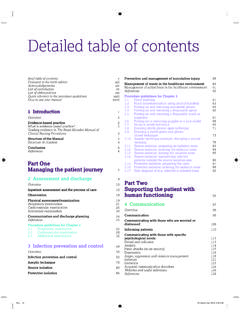Transcription of Expansion of PD-1-Positive Effector CD4 T Cells in an ...
1 Kobe J. Med. Sci., Vol. 59, No. 2, pp. E64-E71, 2013 Expansion of PD-1-Positive Effector CD4 T Cells in an Experimental Model of SLE: Contribution to the Self-Organized Criticality Theory YUMI MIYAZAKI1,2, KEN TSUMIYAMA1, TAKASHI YAMANE3, MITSUHIRO ITO2 and SHUNICHI SHIOZAWA1,* 1 Department of Medicine, Kyushu University Beppu Hospital, Beppu, Japan. 2 Department of Biophysics, Kobe University Graduate School of Health Science, Kobe, Japan. 3 Rheumatic Diseases Center, Kohnan Kakogawa Hospital, Kakogawa, Japan. Received 7 January 2013/ Accepted 15 January 2013 Key words: Self-organized criticality theory, Systemic lupus erythematosus, Programmed cell death-1, Effector CD4 T cell, Effector -memory CD8 T cell We have developed a systems biology concept to explain the origin of systemic autoimmunity.
2 From our studies of systemic lupus erythematosus (SLE) we have concluded that this disease is the inevitable consequence of over-stimulating the host s immune system by repeated exposure to antigen to levels that surpass a critical threshold, which we term the system s "self-organized criticality". We observed that overstimulation of CD4 T Cells in mice led to the development of autoantibody-inducing CD4 T Cells (aiCD4 T) capable of generating various autoantibodies and pathological lesions identical to those observed in SLE. We show here that this is accompanied by the significant Expansion of a novel population of Effector T Cells characterized by expression of programmed death-1 (PD-1)-positive, CD27low, CD127low, CCR7low and CD44highCD62 Llow markers, as well as increased production of IL-2 and IL-6.
3 In addition, repeated immunization caused the Expansion of CD8 T Cells into fully-matured cytotoxic T lymphocytes (CTL) that express Ly6 ChighCD122high Effector and memory markers. Thus, overstimulation with antigen leads to the Expansion of a novel Effector CD4 T cell population that expresses an unusual memory marker, PD-1, and that may contribute to the pathogenesis of SLE. The cause of systemic lupus erythematosus (SLE) remains unknown (5, 17) and attempts to experimentally induce SLE have so far been not fruitful. However, we have succeeded in inducing experimental SLE in mice by repeated antigen stimulation (21). From the stand point of systems biology, our results suggest that SLE is the inevitable consequence of over-stimulating one s immune system to levels that exceed critical threshold, or what we term the systems self-organized criticality (21).
4 The key observation is that overstimulation with any antigen, including keyhole limpet hemocyanin (KLH), ovalbumin (OVA) or staphylococcal enterotoxin B (SEB), leads to the development of autoantibody-inducing CD4 T (aiCD4 T) Cells . We observed that these Cells had undergone T cell receptor (TCR) revision, were capable of inducing a variety of autoantibodies and could induce differentiation of CD8 T cell into cytotoxic T lymphocytes (CTL) via antigen cross-presentation, and that this ultimately leads to the development of an autoimmune condition in mice indistinguishable from SLE. Phone: +81-977-27-1656 Fax: +81-977-27-1656 E-mail: E64 PD-1-Positive CD4 T Cells in experimental SLE In the present study, we further characterized this aiCD4 T cell population with respect to surface marker expression and cytokine production in mice immunized 12x with KLH, OVA or SEB.
5 These aiCD4 T Cells exhibited de novo TCR revision, and express the novel programmed death-1 marker PD-1. We discuss the role of these Effector CD4 T Cells in the pathogenesis of SLE. MATERIALS AND METHODS Animal studies Animal studies using BALB/c female mice (Japan SLE, Inc., Hamamatsu, Japan) were approved by the Institutional Animal Care and Use Committee and carried out according to the Kobe University Animal Experimental Regulations. Mice (8 weeks-old) were repeatedly immunized with 100 g Keyhole limpet hemocyanin (KLH) (Sigma, St. Louis, MO), 500 g ovalbumin (OVA) (grade V; Sigma), 25 g staphylococcal enterotoxin B (SEB) (Toxin Technologies, Sarasota, FL) or PBS by means of injection every 5 days.
6 Detection of cell-surface molecules by flow cytometry Surface staining was done in the dark on ice for 30 min in PBS. APC (allophycocyanin)-conjugated antibody against CCR7 (4B12), FITC-conjugated antibodies against CD45RB (C363-16A) and CD27 ( ), PerCP (Peridinin-chlorophyll proteins cyanin )-conjugated antibodies against CD4 (RM4-5) and CD8 ( ), PE-conjugated antibodies against CD122 (5H4) and CD62L (MEL-14), and purified antibodies against CD3 (145-2C11) and CD28 ( ) were purchased from BioLegend (San Diego, CA). FITC-conjugated antibodies against CD44 (IM7) and Ly6C (AL-21), and PE-conjugated antibodies against PD1 (CD279; J43) were purchased from BD PharMingen (San Diego, CA).
7 PE-conjugated antibody against CD127 (A7R34) was purchased from eBioscience (San Diego, CA). Samples were analyzed on a BD PharMingen FACSC alibur, and raw data was analyzed using CellQuest software (BD PharMingen). Cytokine assays CD4 T Cells were isolated from immunized mice using MACS beads (Miltenyi Biotec), and stimulated in vitro with plate-bound anti-CD3 (2 g/ml) and anti-CD28 (5 g/ml) antibodies at 37 C for 2 days. Cytokines, IL-4, IFN , IL-2 and IL-6, in culture supernatants were measured by using ELISA (Invitrogen/BioSource International; Camarillo, CA). RESULTS Expansion of PD-1-expressing Effector CD4 T Cells after repeated immunization with antigen BALB/c mice were immunized 12x with KLH, OVA or SEB to generate aiCD4 T Cells (21).
8 Analysis of total CD4 T Cells revealed the significant Expansion of a population expressing CD27low, CD45 RBlow, CD122high and PD-1high markers in the repeat-immunized mice but not in the control non-immunized mice (Figure 1). E65 Y. Miyazaki et al. Figure 1. CD4 T cell surface markers. BALB/c mice were repeatedly injected with 100 g of keyhole limpet hemocyanin (KLH), 500 g of ovalbumin (OVA), 25 g of staphylococcal enterotoxin B (SEB), or PBS every 5 days. The CD4 T Cells from immunized mice were stained with the respective antibodies and analyzed by flow cytometry (upper). Bar graphs represent the mean SD of marker expression (n = 5) (down).
9 In particular, we observed Expansion of CD4 T Cells exhibiting an Effector phenotype, CD27low and CD44highCD62 Llow (Figure 2A). Furthermore, these CD44highCD62 Llow CD4 T Cells uniquely expressed the PD-1 marker upon repeated immunization with OVA (Figure 2C). In contrast, T cell memory markers such as CD127high, CCR7high and CD44highCD62 Lhigh were comparable between the repeat-immunized and control non-immunized mice. Further, CD4 T Cells isolated from both groups produced comparable amounts of IFN and IL-4 (Figure 3), whereas CD4 T Cells from mice immunized 12x with KLH produced significantly higher amounts of IL-2 and IL-6 compared to the controls. E66 PD-1-Positive CD4 T Cells in experimental SLE Figure 2.
10 Effector and memory cell markers on CD4 T Cells (A) and CD8 T Cells (B) as determined by CD44highCD62 Llow and CD44highCD62 Lhigh expression. (C) Expression of PD-1 marker on Effector and memory CD4 T Cells . Figure 3. Cytokine production from CD4 T cell subsets. Mice were immunized 12x with 100 g of KLH and CD4 T Cells obtained 9 days after the final immunization were sorted and stimulated in vitro with plate-bound anti-CD3 and anti-CD28 antibodies for 2 days. Culture supernatants were assayed for IL-4, IFN , IL-2 and IL-6. E67 Y. Miyazaki et al. Expansion of conventional Effector and memory CD8 T Cells after repeated immunization with antigen examination of the CD8 T cell populations revealed significant Expansion of Cells expressing CD122high, Ly6 Chigh and CD44highCD62 Llow Effector (14, 24) and CD44highCD62 Lhigh memory (24) markers, in repeat-immunized mice versus non-immunized controls (Figures 2B, 4).

